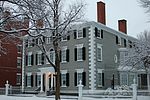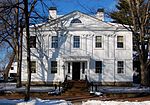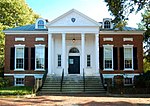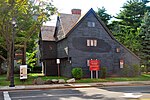Chestnut Street District
1973 establishments in MassachusettsHistoric districts in Essex County, MassachusettsHistoric districts on the National Register of Historic Places in MassachusettsHistory of Salem, MassachusettsNRHP infobox with nocat ... and 4 more
National Register of Historic Places in Salem, MassachusettsProtected areas established in 1973Tourist attractions in Salem, MassachusettsUse mdy dates from August 2023

The Chestnut Street District is a historic district bounded roughly by Bridge, Lynn, Beckford, and River Streets in Salem, Massachusetts. It was added to the National Register of Historic Places in 1973 and enlarged slightly in 1978. The district contains a number of architecturally significant works of Samuel McIntire, a builder and woodworker who had a house and workshop at 31 Summer Street, and who designed and built a number of these houses, and others that display the profits made in the Old China Trade by Salem's merchants. The district is a subset of a larger locally designated McIntire Historic District.
Excerpt from the Wikipedia article Chestnut Street District (License: CC BY-SA 3.0, Authors, Images).Chestnut Street District
Essex Street, Salem
Geographical coordinates (GPS) Address Nearby Places Show on map
Geographical coordinates (GPS)
| Latitude | Longitude |
|---|---|
| N 42.520277777778 ° | E -70.902222222222 ° |
Address
Essex Street 361
01970 Salem
Massachusetts, United States
Open on Google Maps











